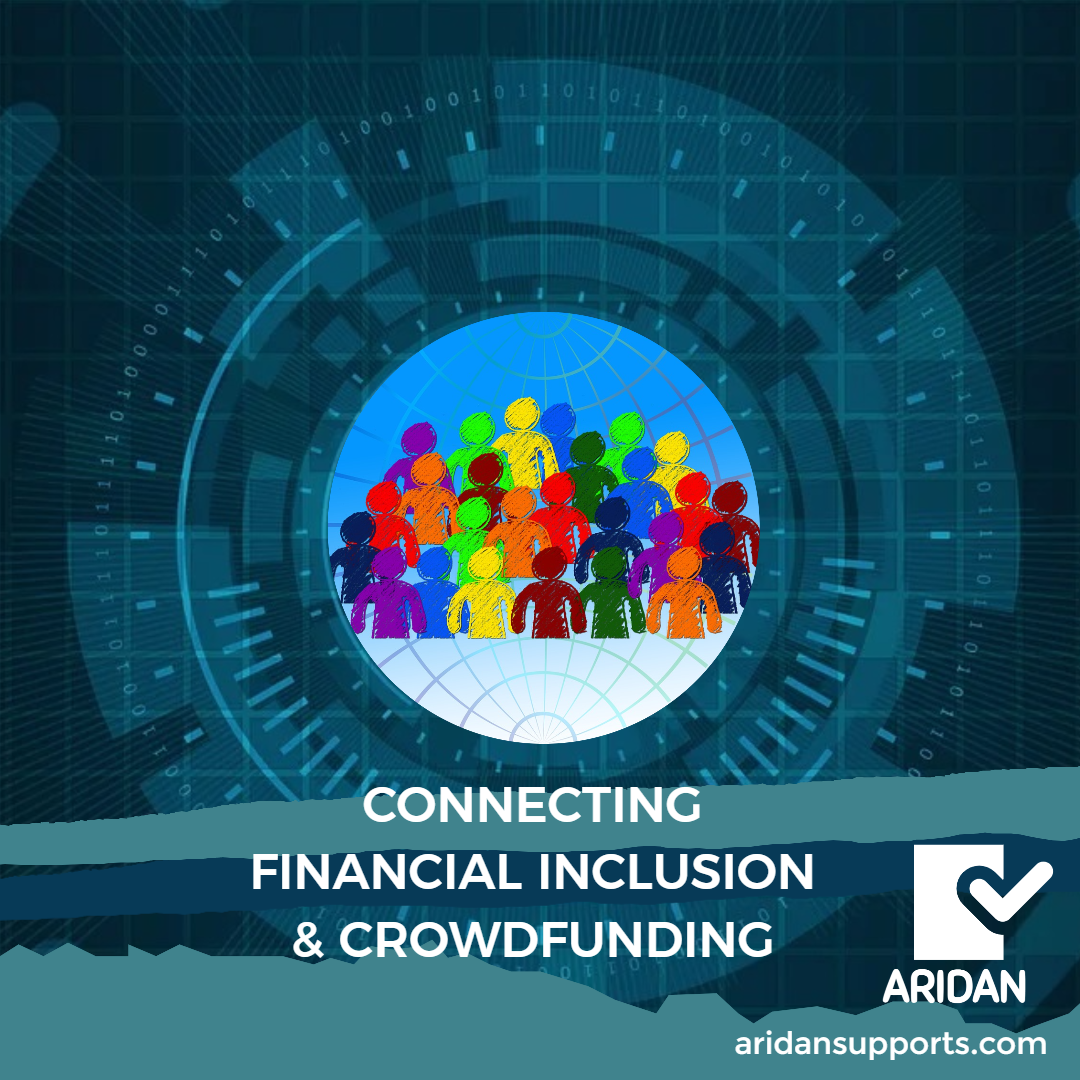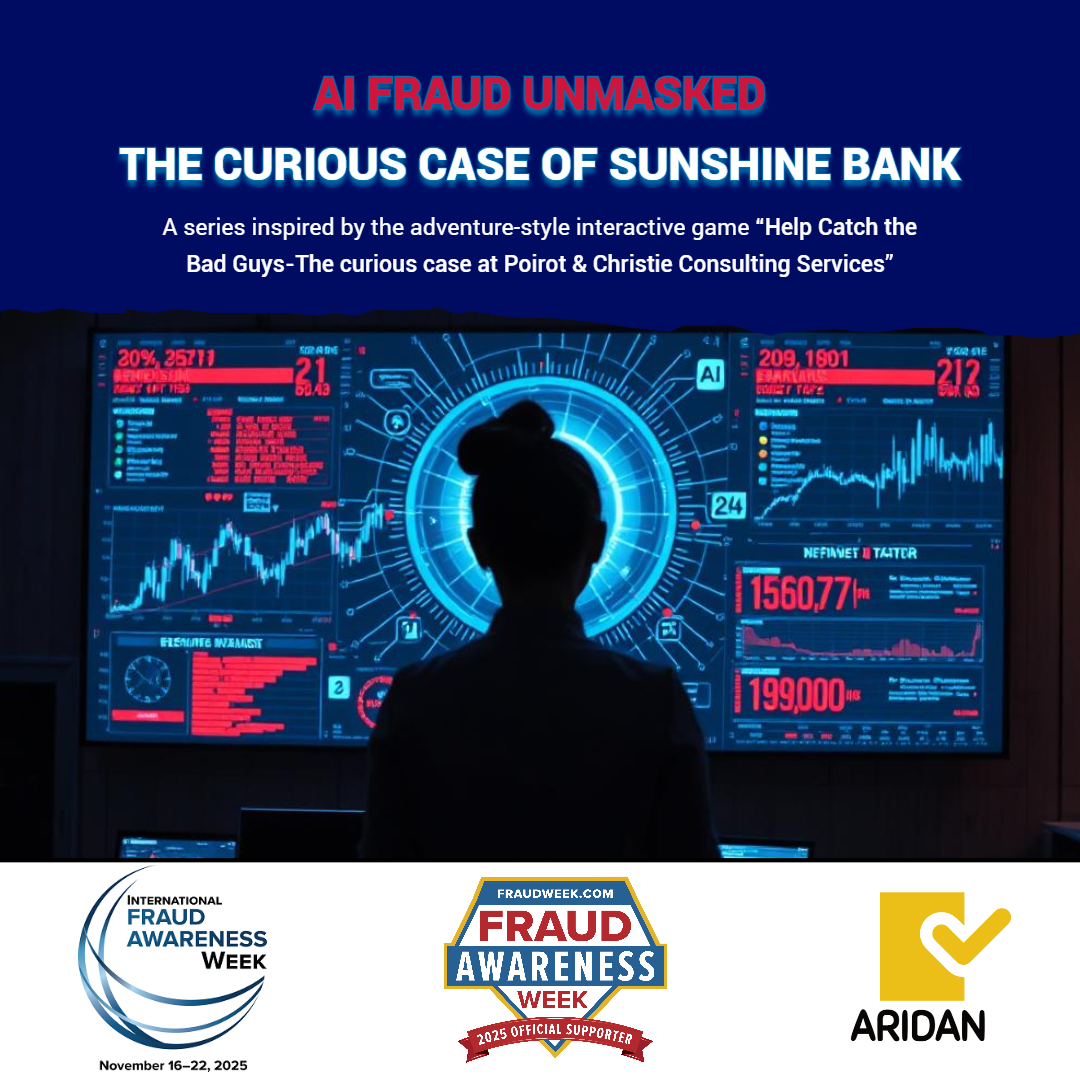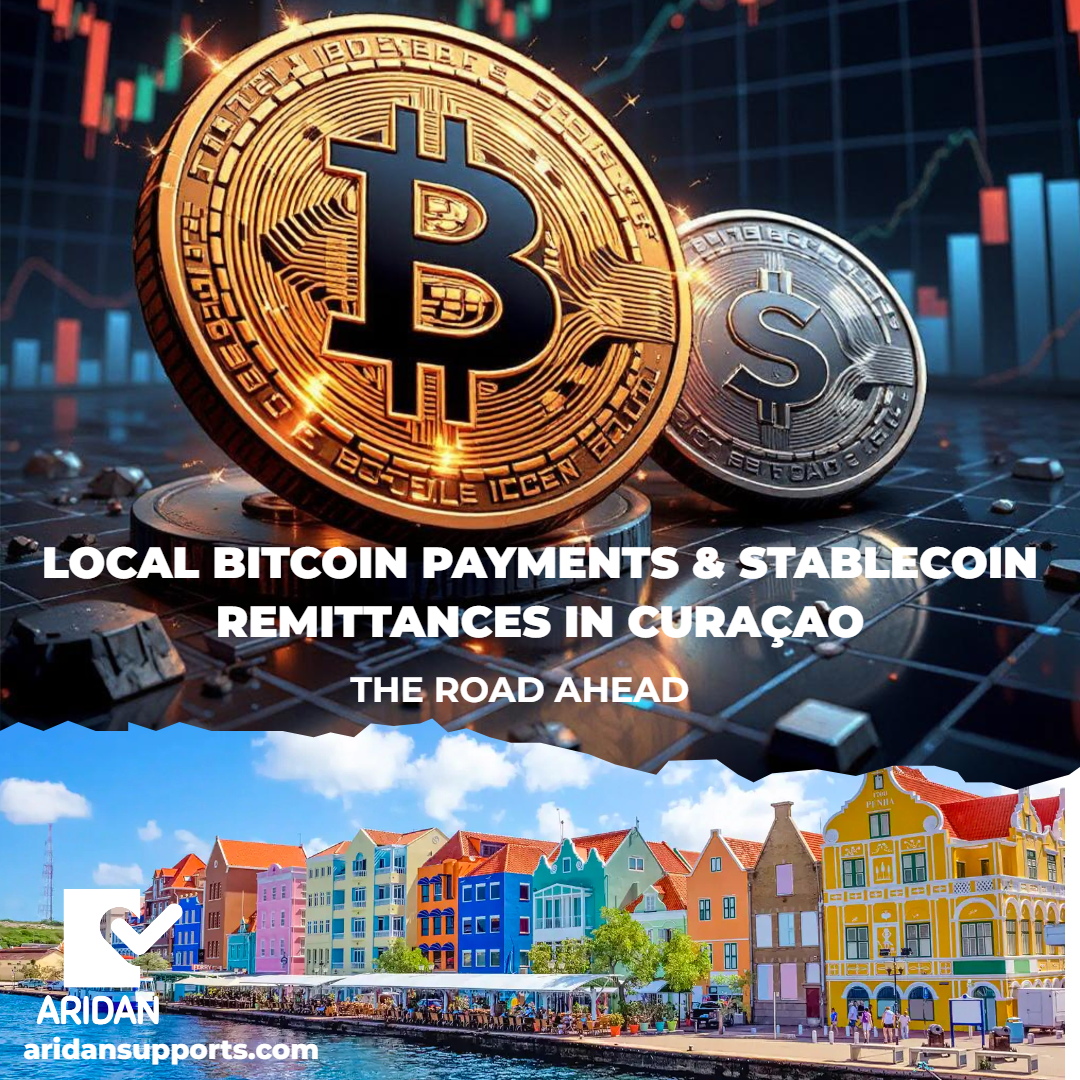“Financial Inclusion” refers to the availability, and provision of equal opportunity access to financial services like payments, savings, credits, and insurance for every individual and business according to the World Bank (2018).
It aims to eradicate some of the barriers that hinder the underserved and excluded people and businesses from accessing financial services. Crowdfunding has been an important factor that positively impacted Financial Inclusion. How?
UNDERSTANDING THE CONNECTION
Crowdfunding has facilitated financing opportunities for many who are usually excluded from the traditional way of financing by raising capital in small amounts from a crowd. Unlike traditional crowdfunding platforms, digital crowdfunding shifts all its operations through a digital platform hence the name “Digital Crowdfunding”, but it is popularly known as just “Crowdfunding”.
To understand the important connection between financial inclusion and crowdfunding we need to understand why financial inclusion is important, the different types of crowdfunding, and how crowdfunding has had an impact in some developed countries.
WHY IS FINANCIAL INCLUSION SO IMPORTANT?
According to the Word Bank Great strides have been made toward financial inclusion and 1.2 billion adults worldwide have gotten access to an account between 2011 and 2017. Moving from access to usage of accounts is the next step for countries where 80% or more of the population have accounts (China, Kenya, India, Thailand). These countries relied on reforms, private sector innovation, and a push to open low-cost accounts, including mobile and digitally enabled payments.
However, close to one-third of adults (1.7 billion) were still unbanked in 2017, according to the 2021 Global Findex Database. About half of the unbanked people included women in poor households in rural areas or out of the workforce. With no means of making daily transactions for their payments, chances of improving their lifestyle are significantly low. They also don’t have a way to save some of their earnings, to cushion them during disasters.
Moreover, with most of the poor population involved in the informal sector, they are deprived of the credits they need to make investments that may improve their lives. This condemns the economy of each country to instability and, consequently, increases poverty rates. That’s why there’s a need for financial inclusion.
When more underserved people have access to financial services, it becomes much easier for them to save. More savings means a decline in poverty rates and an increase in employment levels. The importance of savings has been ignored for a long time. People have been encouraged to spend money instead of saving money. The attractiveness of saving has also been impacted by the low-interest rates offered by banks.
For underserved businesses, SMEs, and startups, inclusion means access to business growth and crucial business elements like insurance. Individuals and businesses will be able to recover quickly in times of disaster avoid the state of hopelessness and avoid poverty.
Formal bank transfers are also known to ignite the entrepreneurship spirit in people. Thus, addressing financial inclusion may result in more capital formation, which could be beneficial for the economic growth of a country.
ABOUT CROWDFUNDING
Crowdfunding has been successful in the financial market because it reduces the barriers involved in raising money. Contrary to traditional models, the conventional applications and restrictions are reduced, allowing almost anyone to donate or invest in crowdfunding platforms.
Depending on the business’s goals and structure, any business owner seeking to raise capital can choose from the following four digital crowdfunding models:
DONATION-BASED CROWDFUNDING
Donation-based crowdfunding refers to a charity-based crowdfunding model. As you might guess, the model allows fundraisers to raise capital from a community of donors without offering anything in return. It’s a donation made towards a charity or project.
This model is suitable for industries in the non-profit sector but also for individuals seeking financial support. Some examples of successful donation-based crowdfunding platforms include GoFundMe, GiveSendGo, M-Changa, and Kiva.
REWARDS-BASED CROWDFUNDING
With rewards-based crowdfunding individual investors or donors, receive rewards in exchange for the money they give. The rewards can be anything from the fundraiser’s free products to handmade items, to prizes from the business.
These four fundraising models work differently but achieve the same goals. However, crowdfunding platforms also take a small percentage cut as fees for the amount raised. In some cases, this goes as high as 5%. Some examples of reward-based crowdfunding platforms that were successful include IndieGoGo, Kickstarter, Guanxi Invest, Patreon, and FundMyComic.
EQUITY-BASED CROWDFUNDING
With equity-based crowdfunding, the business owners offer stakes in their company for an investor’s money. Here, an investor becomes a shareholder of the company. So, when the business makes a profit, shareholders receive dividends.
This model is popular among small businesses and startups seeking to expand. It’s also the most developed of all crowdfunding models as it has the most stable regulatory framework based on the capital market. A few popular equity-based crowdfunding examples are StartEngine, SeedInvest, AngelList, Republic, MicroVentures, Wefunder, and OnePlanetCrowd.
DEBT-BASED CROWDFUNDING
Known also as peer-to-peer lending or P2P lending, debt-based crowdfunding isn’t far from the regular banking system. The main difference is, debt-based crowdfunding relies on several investors who are willing to loan money to a business, in exchange for consistent fixed interest, until the agreed time matures.
The model is common among businesses that don’t want to give up their stakes in the company. This is the same model applied to real estate crowdfunding. Some examples of successful debt-based crowdfunding platforms include EstateGuro, Hive5, Kiva, Mekar, Milaap, Lending Club, PeerBerry, and Prosper.
UNDERSTANDING THE OPPORTUNITIES
Using crowdfunding to promote financial inclusion does not seem like a crazy idea. Some of the potential opportunities it can create include:
INCREASED ACCESS TO FINANCE
Crowdfunding offers a quick route to alternative financing for underserved groups and individuals. With millions raised every year from crowdfunding, this can be an excellent opportunity for developing economies.
Furthermore, the versatility offered by crowdfunding means investors and fundraisers will always have alternatives for their income. Models like debt-based crowdfunding act as good forms of digital credit, which can help SMEs and start-ups garner enough credit for loans from banks and other financial institutions.
By offering cheap transaction and interest rates, crowdfunding platforms have the opportunity to outdo traditional lenders. This will be a big boost to individuals and businesses with restricted reach to financial services.
INCREASED INNOVATION
In an age where everything is digitized, crowdfunding can steer towards digitization to improve their access to fundraisers and investors. Financial technology, like mobile money, and digital credit, which have already been successful, can be incorporated into crowdfunding to simplify the process.
The incorporation of cloud technology and big data into crowdfunding will also reduce costs and help assess the risks of financial inclusion.
ACCESS TO NEW INVESTMENTS
With crowdfunding, the excluded communities can also raise capital to improve their business and establish themselves. This will create new opportunities and stimulate new products and innovation, which can be very profitable with the right management, and good capital.
Underserved individuals will also spot opportunities in their market where they can invest and earn extra income to improve their lives and a way to recover from emergencies and disasters.
UNDERSTANDING THE CHALLENGES
While crowdfunding appears to be a great way to address financial inclusion, it’s still miles away from having any real impact. This is because crowdfunding is still a relatively new FinTech-based solution, and hence, it has yet to overcome most of its challenges. Some of its biggest challenges include:
WEAK REGULATIONS AND LEGAL FRAMEWORK
As a relatively new financing solution, most financial regulatory bodies are yet to develop robust regulations and guidelines. There are still uncertainties around cybersecurity, accountability, and privacy that make crowdfunding risky for users (businesses and donors/investors). Users are left trusting the moral compass of the platform owners. Unless they change the bank regulations to include the current low-income unbanked group, they will remain excluded.
Moreover, even with the existing rules, the regulations appear to be one-sided in favor of the investors. This puts businesses at a disadvantage because they’re equally risking their business in the process. Here we are talking about the micro and small businesses that have everything to lose.
We see the importance of screening and “checks and balances” with examples of crowdfunding initiatives by nonprofit organizations during the pandemic. How do we as donors know that our donation is reaching those in need? Who is accountable for evenly distributing the donations? Can we sue them if they don’t? The answers to these questions will determine the role and accountability of the parties involved.
Only when proper regulations and legal frameworks are established, can the full potential of crowdfunding be utilized as it will become more trustworthy. Until then, all we can do as potential donors/investors is ask for detailed information to make informed decisions.
LIMITED INTERNET ACCESS
Internet Access is also a huge barrier that limits financial inclusion and crowdfunding. While the model may be effective, the limited internet access, especially among the underserved and excluded businesses and individuals will make it more challenging to achieve financial inclusion.
In the African and Indian continents, for instance, internet availability is still in development, and while most urban areas have access, the majority – who live in rural areas, are still in the dark. Furthermore, even with access to the internet, payment technologies like PayPal, and credit cards may also cut off some of the fundraisers.
LACK OF AWARENESS AND TECH EDUCATION
Lack of awareness and tech education are vital issues when we talk about FinTech. Since crowdfunding is still new, only a minority of the population has knowledge of its pros and cons as a fundraising model. This poses a huge challenge for crowdfunding platforms and governments.
For crowdfunding platform owners, the main challenge is to reach/inform and educate current and potential users. For governments, the main challenges would include the protection of the platform users through rules and regulations and mitigating any potential negative impact on the financial sector due to a lack of financial literacy, and proper regulation.
LIMITED UNIVERSAL ACCESS
Universal access, especially for the poor and underserved communities that don’t have the means to get a smartphone or internet access is one of the challenges to achieving financial and digital inclusion. The solution would be for the public and private sectors to provide free tech (STEM) education, free internet access in certain areas of the community, affordable internet prices at the utility level and to stimulate the offer of online and mobile services as a combo and ensure that there are affordable phones for people to buy.
LIMITED ACCESS TO THE GLOBAL EARNINGS GAME
Some countries are excluded from participating in the earnings game on certain platforms such as YouTube, Locals, Marker Content, and Patreon, preventing them from gaining supplemental income that can be earned through donations (for example super chats on YouTube) and subscription plans on these platforms if they don’t have Paypal, Stripe, or Payoneer. Not necessarily because they are on any black or grey list but simply because they are small island nations that are linked to imperialistic nations. The cost for them to be added to the earnings game seems expensive somehow.
Freelancers from these geographically restricted countries also are having difficulty receiving their payments online from their work on platforms such as Fiverr that require them to have either Payoneer or PayPal as the payment processing platform. In most cases, these countries have wire transfers as the primary option to be able to receive and send money abroad. It includes the presence of a middleman and the corresponding bank. The whole process includes bank fees that result in the freelancers receiving a lower amount than expected.
NO PROPER TRAINING FOR THE ELDERLY
Proper training for the elderly needs to be integrated into the digital sphere and is also a crucial factor in financial and digital inclusion.
Most of the elderly are not going to easily change their mobile phones for smartphones. Just giving them the phones or telling them how to access their account without raising awareness of the risks in the cyber world has made them an easy target for cybercriminals and opportunists.
STORIES IN DEVELOPING COUNTRIES
While financial inclusion is a global issue, in developing countries it is one of the most important challenges. As such, some of these countries have adopted crowdfunding solutions to help address these challenges. Some have failed while others keep trying to improve the solutions and address the challenges. Some of the countries making headway include:
KENYA
Kenya was one of the first African countries to adopt mobile payment. With nearly 87% of the country using the M-Pesa mobile money transfer, a rise in digital crowdfunding is expected. The country is home to Africa’s largest online crowdfunding platform M-Changa which has opened doors for many Kenyans to improve their lives.
The simplicity of M-Pesa, which doesn’t require a smartphone, means that even businesses in remote areas without Internet can still benefit from crowdfunding, and improve their lives.
This crowdfunding platform has reached out to even the vulnerable in society helping to build up businesses, funding medical bills, and raising school fees, among other benefits. Its reach and success are mostly due to the trust of the public, and the available active mobile infrastructure.
INDONESIA
In Asia, Indonesia’s P2P lending platform Mekar has expanded its micro-lending services to the underserved and excluded business all across the country. With numerous other P2P lending sites running in the country, these moves by Mekar in 2017, resulted in immense growth for small businesses in the country. The platform has also opened a massive investment opportunity for investors across Indonesia, who are now jumping onto these openings.
INDIA
India’s Milaap has also achieved an incredible feat around the country. The crowdfunding platform, which provides loans for medical emergencies, education, sports, and disaster relief, boasts of helping millions of Indians. Founded in 2010, the platform utilizes the country’s powerful social network to source for donors who raise money for personal causes.
This enables underserved Indians in the country to access the financial services and products they need for better healthcare, better education, and recovery from disasters. It also helps improve their lifestyle and, subsequently, their living standards.
From experiencing the implementation of these digital solutions in these countries many of their citizens benefited from these solutions as well as experienced the challenges of using these solutions. Overall, there is still work to be done to facilitate the secure use of these solutions.
FINAL THOUGHTS
Crowdfunding is proving to be a valuable solution in the quest to achieve financial inclusion and a democratized financial industry. It has become a very important tool that could elevate many poor citizens into the middle class and make it possible for them to establish businesses to support their families and positively contribute to their local economy.
However, proper regulations, effective financial education, tech education, and internet access are challenges to be resolved by the public and private sectors working together. Last but not least, the issue of geographical financial restrictions should also be taken into consideration in the global conversation of financial inclusion. If the exclusion remains the alternative is to develop these solutions locally with the combination of knowledge, expertise, and regulation and the collaboration between the public and private sector.








